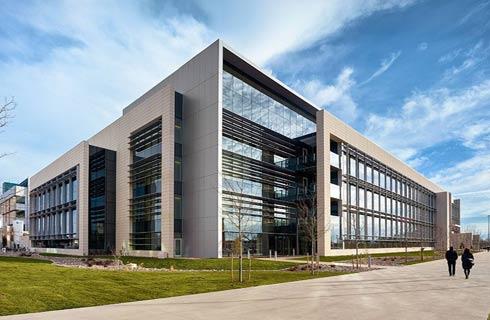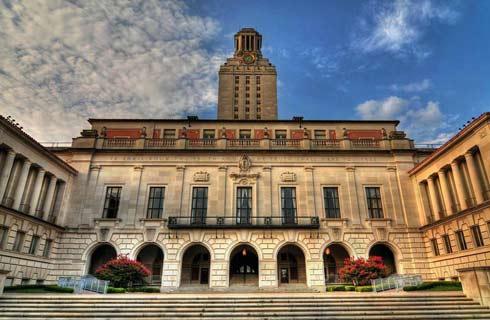设计工程硕士
Master in Design Engineering

学历文凭
Masters Degree

专业院系

开学时间

课程时长

课程学费

国际学生入学条件
Consideration will be given to applicants who are ready to tackle the world’s most complex challenges and:
- have at least two years of professional experience in engineering, design, business, government, or other fields;
- hold a degree in design, engineering, sciences, social sciences, or a related field; and
- have demonstrated technical literacy (see below) and multidisciplinary design interests. Applicants must be prepared to submit a portfolio/set of project descriptions.
English Language Scores: The preferred total TOEFL iBT score is 104 or above, with individual section scores of 26 or above. The minimum required TOEFL iBT total score is 92, with the following minimum section requirements: reading, 23; speaking, 23; listening, 23; writing, 23. If TOEFL iBT is not available, and the paper-based TOEFL is taken, applicants must achieve a minimum total score of 577 and a minimum of 57 on each section. A score of 600 is preferred, with individual section scores of 60.
IDP—雅思考试联合主办方

雅思考试总分
6.0
- 雅思总分:6
- 托福网考总分:92
- 托福笔试总分:577
- 其他语言考试:NA
CRICOS代码:
申请截止日期: 请与IDP联系 以获取详细信息。
课程简介
The Master in Design Engineering (MDE) program prepares the next generation of leaders to create transformative solutions that positively impact society. The integrated fields of design and engineering are uniquely positioned to address the world's toughest challenges. Our world faces increasingly complex, often unpredictable dilemmas of consequence to human lives and living environments, including rapid urbanization, ecological changes, and resource scarcity. These and other problems demand a deep understanding of the underlying problem architecture, which in turn enables innovative, multi-faceted solutions that transcend disciplines and scales. By bridging the gaps between academic fields and practical, real-world stakeholders, the MDE program prepares a new generation of innovators who operate both creatively and analytically, think strategically, and collaborate broadly. MDE graduates are capable of leading change and advancing novel, real-world solutions. The newly integrated fields of design and engineering are uniquely positioned to address challenges that involve interactions of natural, social, and informational systems. The design engineering toolkit encompasses multi-layered, analytical approaches, networked objects and environments, soft and hard infrastructures, and strategic plans, all of which can be applied to address grand challenges and mitigate threats to our built and natural environment. Never before have two Harvard schools established a collaborative degree of this nature, built from the ground up by design and engineering faculty, and guided by an External Advisory Board of industry leaders. The structure of the program, from its curriculum to community, is designed to foster interaction and critical thinking across disciplines, which in turn means graduates better equipped to face complex problems.
相关申请
 预科
预科 奖学金
奖学金 实习机会
实习机会 在校学习
在校学习 跨境学习
跨境学习 校园授课-线上开始
校园授课-线上开始 在线/远程学习
在线/远程学习
开学时间&学费
学费信息仅供参考,请与IDP联系以获取详细信息
| 开学时间 | 时长 | 学费 | 地点 |
|---|
学校排名

世界排名6
数据源:
泰晤士高等教育世界大学排名
关于哈佛大学

先后诞生了八位美国总统,40位诺贝尔奖得主和30位普利策奖得主。哈佛大学商学院案例教学盛名远播。这里也培养了缔造了微软、IBM、Facebook等一个个商业奇迹的人。哈佛大学教学资源之丰富令人咋舌。哈佛大学拥有70个独立图书馆,3000英亩森林研究站,12座教学用博物馆,占地265英亩的植物园,哈佛大学有24座科学研究专用校舍,多个剧院和舞台,41支体育团队,450个学生社团……除此之外,你还能够跨界注册哈佛研究生院与职业学院,甚至邻居麻省理工的课程! 满足哈佛大学本科录取要求的学生SAT Math部分平均成绩在710到790之间;Verbal部分平均得分在700-800之间;平均SAT总分(Combined)为2225,比全美其它各大学的录取平均SAT成绩高出了41.3%。每年约有70%的学生能够获得奖学金,且申请奖学金不会影响申请者被录取的几率。
本校相关课程

公共卫生博士
学历文凭
Ph.D.
开学日期
课程费用总额


公共卫生硕士(45学分)
学历文凭
Masters Degree
开学日期
课程费用总额


工商管理硕士/医学博士
学历文凭
Combined Graduate / Doctoral Degree
开学日期
课程费用总额


法学博士/国际发展公共管理硕士
学历文凭
Combined Graduate / Doctoral Degree
开学日期
课程费用总额


法学硕士
学历文凭
Masters Degree
开学日期
课程费用总额


法学博士
学历文凭
Juris Doctor
开学日期
课程费用总额










 美国
美国